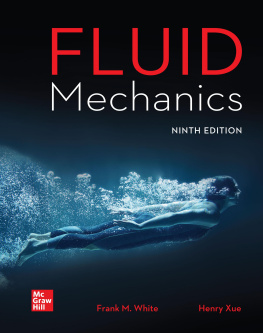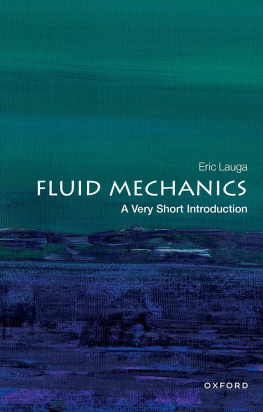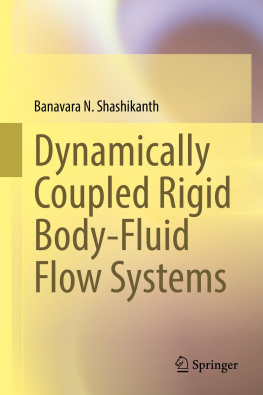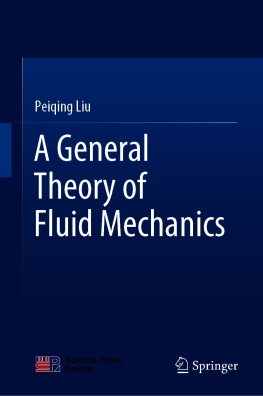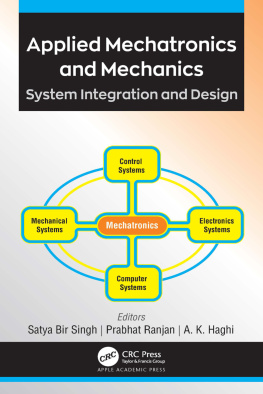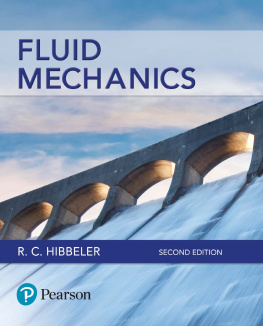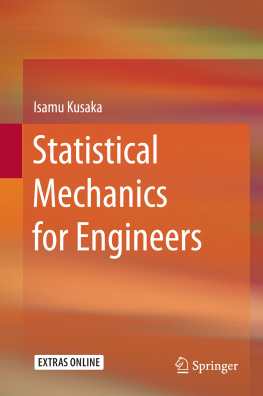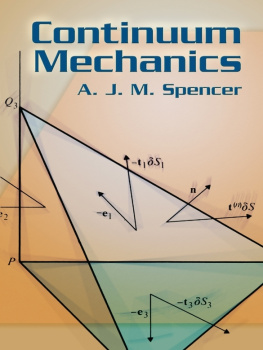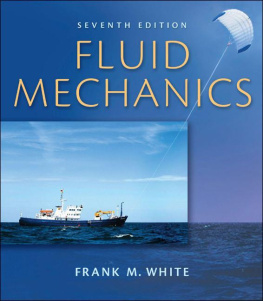Applied Fluid Mechanics for Engineers
About the Author
Meinhard T. Schobeiri, Ph.D., is currently the Oscar Wyatt Professor of Mechanical Engineering at Texas A&M University in College Station, Texas, where he studies steady and unsteady flow within turbomachinery components and systems, turbine, and compressor performance, aerodynamics, heat transfer, thermodynamics, and nonlinear dynamic behavior of aircraft engines and stationary gas turbines. He introduced the concept of the ultra-high-efficiency gas turbine with stator internal combustion, and is now working on concept realization. Dr. Schobeiri received his Dipl.-Ing. (M.S.) and Dr.-Ing. (Ph.D.) degrees from the Technical University Darmstadt in Germany. He worked for the Brown Boveri Gas Turbine Division in Switzerland in several positions, where he headed R&D for high-efficiency gas turbine engines before he joined Texas A&M University in 1978. Dr. Schobeiri was on the research faculty at NASA-Luis Research Center (now GRC) and has received the NASA Research Recognition Award. He won the Alexander von Humboldt Research Award in 2000 and is a TAMU Faculty Fellow (2001) and TEES Fellow (1998). In addition to his research activities, Dr. Schobeiri serves the engineering community as an active ASME Fellow.
Applied Fluid Mechanics for Engineers
Meinhard T. Schobeiri
New York Chicago San Francisco
Athens London Madrid
Mexico City Milan New Delhi
Singapore Sydney Toronto
Copyright 2014 by McGraw-Hill Education. All rights reserved. Except as permitted under the United States Copyright Act of 1976, no part of this publication may be reproduced or distributed in any form or by any means, or stored in a database or retrieval system, without the prior written permission of the publisher.
ISBN: 978-0-07-180005-1
MHID: 0-07-180005-0
e-Book conversion by Cenveo Publisher Services
Version 1.0
The material in this eBook also appears in the print version of this title: ISBN: 978-0-07-180004-4, MHID: 0-07-180004-2.
McGraw-Hill Education eBooks are available at special quantity discounts to use as premiums and sales promotions, or for use in corporate training programs. To contact a representative, please visit the Contact Us page at www.mhprofessional.com.
All trademarks are trademarks of their respective owners. Rather than put a trademark symbol after every occurrence of a trademarked name, we use names in an editorial fashion only, and to the benefit of the trademark owner, with no intention of infringement of the trademark. Where such designations appear in this book, they have been printed with initial caps.
Information has been obtained by McGraw-Hill Education from sources believed to be reliable. However, because of the possibility of human or mechanical error by our sources, McGraw-Hill Education, or others, McGraw-Hill Education does not guarantee the accuracy, adequacy, or completeness of any information and is not responsible for any errors or omissions or the results obtained from the use of such information.
TERMS OF USE
This is a copyrighted work and McGraw-Hill Education and its licensors reserve all rights in and to the work. Use of this work is subject to these terms. Except as permitted under the Copyright Act of 1976 and the right to store and retrieve one copy of the work, you may not decompile, disassemble, reverse engineer, reproduce, modify, create derivative works based upon, transmit, distribute, disseminate, sell, publish or sublicense the work or any part of it without McGraw-Hill Educations prior consent. You may use the work for your own noncommercial and personal use; any other use of the work is strictly prohibited. Your right to use the work may be terminated if you fail to comply with these terms.
THE WORK IS PROVIDED AS IS. McGRAW-HILL EDUCATION AND ITS LICENSORS MAKE NO GUARANTEES OR WARRANTIES AS TO THE ACCURACY, ADEQUACY OR COMPLETENESS OF OR RESULTS TO BE OBTAINED FROM USING THE WORK, INCLUDING ANY INFORMATION THAT CAN BE ACCESSED THROUGH THE WORK VIA HYPERLINK OR OTHERWISE, AND EXPRESSLY DISCLAIM ANY WARRANTY, EXPRESS OR IMPLIED, INCLUDING BUT NOT LIMITED TO IMPLIED WARRANTIES OF MERCHANTABILITY OR FITNESS FOR A PARTICULAR PURPOSE. McGraw-Hill Education and its licensors do not warrant or guarantee that the functions contained in the work will meet your requirements or that its operation will be uninterrupted or error free. Neither McGraw-Hill Education nor its licensors shall be liable to you or anyone else for any inaccuracy, error or omission, regardless of cause, in the work or for any damages resulting therefrom. McGraw-Hill Education has no responsibility for the content of any information accessed through the work. Under no circumstances shall McGraw-Hill Education and/or its licensors be liable for any indirect, incidental, special, punitive, consequential or similar damages that result from the use of or inability to use the work, even if any of them has been advised of the possibility of such damages. This limitation of liability shall apply to any claim or cause whatsoever whether such claim or cause arises in contract, tort or otherwise.

Contents
Preface
T he contents of this book cover the material required in the Fluid Mechanics Graduate Core Course (MEEN-621) and in Advanced Fluid Mechanics, a PhD-level elective course (MEEN-622), both of which I have been teaching at Texas A&M University for the past two decades. While there are numerous undergraduate fluid mechanics texts on the market for engineering students and instructors to choose from, there are only limited texts that comprehensively address the particular needs of graduate engineering fluid mechanics courses. To complement the lecture materials, the instructors more often recommend several texts, each of which treats special topics of fluid mechanics. This circumstance and the need to have a textbook that covers the materials needed in the above courses gave the impetus to provide the graduate engineering community with a coherent textbook that comprehensively addresses their needs for an advanced fluid mechanics text. Although this textbook is primarily aimed at mechanical engineering students, it is equally suitable for aerospace engineering, civil engineering, other engineering disciplines, and especially those practicing professionals who perform computational fluid dynamics (CFD) simulation on a routine basis and would like to know more about the underlying physics of the commercial codes they use. Furthermore, it is suitable for self-study, provided that the reader has a sufficient knowledge of calculus and differential equations.
In the past, because of the lack of advanced computational capability, the subject of fluid mechanics was artificially subdivided into inviscid, viscous (laminar, turbulent), incompressible, compressible, subsonic, supersonic, and hypersonic flows. With todays state of computation, there is no need for this subdivision. The motion of a fluid is accurately described by the Navier-Stokes equations. These equations require modeling of the relationship between the stress and deformation tensor for linear and nonlinear fluids only. Efforts by many researchers around the globe are aimed at directly solving the Navier-Stokes equations (DNS) without introducing the Reynolds stress tensor, which is the result of an artificial decomposition of the velocity field into mean and fluctuating parts. The use of DNS for engineering applications seems to be out of reach because the computation time and resources required to perform a DNS calculation are excessive at this time. Considering this constraining circumstance, engineers have to resort to Navier-Stokes solvers that are based on Reynolds decomposition. It requires modeling of the transition process and the Reynolds stress tensor, to which three chapters of this book are dedicated.





